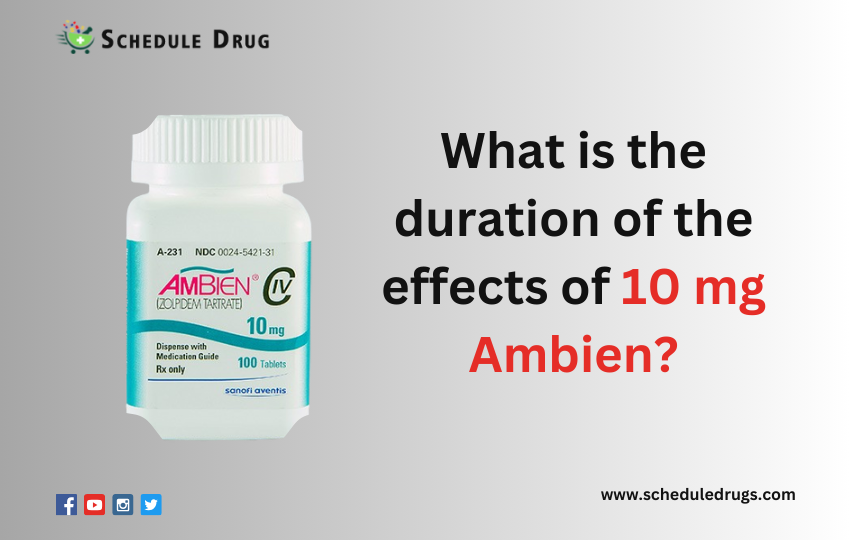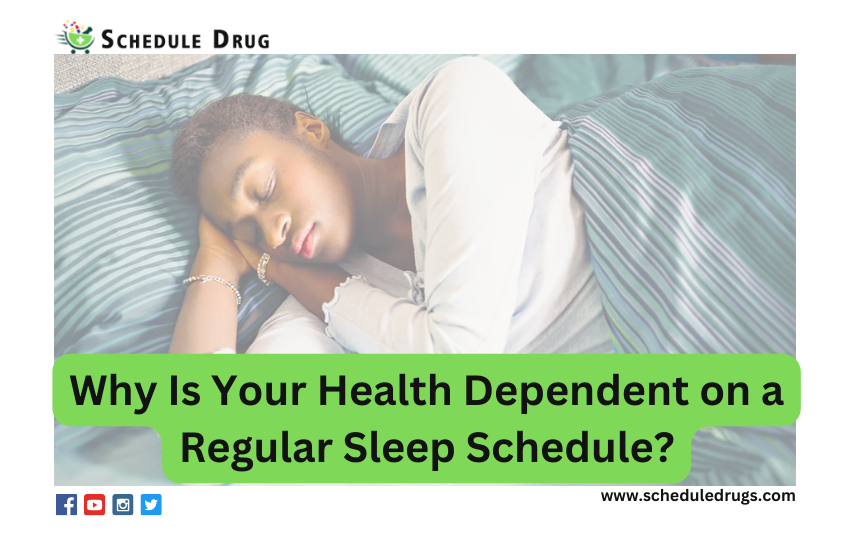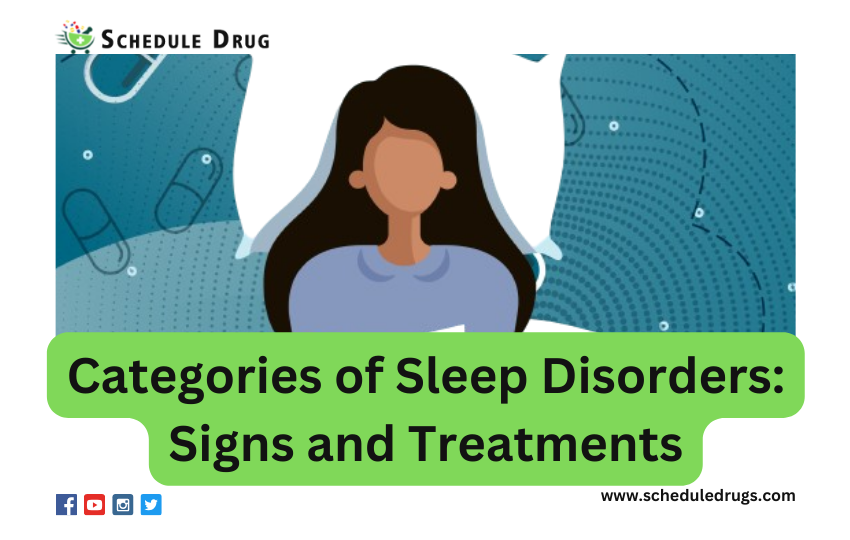Insomnia Is Surprisingly Common Side Effect Of Many Medicines
Insomnia is a surprisingly common side effect of a wide range of medications, affecting people who might not expect their prescriptions to interfere with sleep. Many medicines influence the brain’s chemistry, energy levels, or hormone balance, which can unintentionally disrupt the natural sleep–wake cycle. Changes in neurotransmitters, overstimulation of the nervous system, and shifts in circadian rhythm are some of the most frequent reasons medications trigger sleeplessness.
Different categories of drugs can cause insomnia, even those not typically associated with sleep issues. For example, stimulants, certain antidepressants, steroids, thyroid medications, and some blood pressure treatments may make falling or staying asleep more difficult. In many cases, insomnia isn’t due to the illness being treated but the way the medicine interacts with the body, something many patients don’t realize until sleep problems begin.
What is insomnia?
Insomnia is a sleep disorder in which a person has difficulty falling asleep, staying asleep, or getting restful, good-quality sleep, even when they have the opportunity to do so. It can happen for a short period (acute insomnia), often due to stress or temporary changes, or it can last for months or longer (chronic insomnia).
People with insomnia may lie awake for long periods, wake up frequently during the night, or get up too early and not be able to fall back asleep. As a result, they often feel tired, unfocused, irritable, or less alert during the day.
Insomnia can be caused by many factors, including stress, lifestyle habits, medical conditions, medications, mental health issues, or environmental disruptions. Treatment often focuses on improving sleep habits, addressing underlying causes, and sometimes using therapy or medication when needed.
Types of insomnia
Insomnia can be classified into acute insomnia, which is short-term and often triggered by stress or life events, and chronic insomnia, lasting three months or longer and usually linked to underlying medical, psychological, or lifestyle factors.
1. Acute Insomnia
Acute insomnia is short-term sleep difficulty that typically lasts a few days to a few weeks. It’s often triggered by temporary factors such as stress, travel, illness, or major life changes. Once the trigger passes, sleep usually returns to normal.
2. Chronic Insomnia
Chronic insomnia occurs when sleep problems happen at least 3 nights per week for 3 months or longer. It may result from ongoing health conditions, long-term stress, poor sleep habits, or certain medications. Chronic insomnia often requires treatment or lifestyle adjustments.
3. Onset Insomnia
This type refers to difficulty falling asleep at the beginning of the night. It may be linked to anxiety, stimulants (like caffeine), or an overactive mind that makes it hard to relax.
4. Maintenance Insomnia
Maintenance insomnia involves trouble staying asleep or waking up during the night and struggling to fall back asleep. Causes can include medical issues, sleep apnea, stress, or hormonal changes.
5. Behavioral Insomnia (Common in Children)
This happens when children resist going to bed or have trouble falling asleep due to inconsistent routines, fear, or lack of sleep training.
What Causes Insomnia?
Insomnia, the difficulty in falling or staying asleep, can have a wide range of causes, often involving both physical and psychological factors. One of the most common contributors is stress and anxiety, which can keep the mind overly active at night, making it difficult to relax. Similarly, depression and other mood disorders can disrupt sleep patterns, leading to early waking or fragmented sleep.
Physical health issues also play a significant role in causing insomnia. Conditions such as chronic pain, asthma, acid reflux, or hormonal imbalances can make it difficult to get comfortable or maintain uninterrupted sleep. Additionally, neurological disorders and certain medications—including stimulants, antidepressants, and corticosteroids—can interfere with the body’s natural sleep–wake cycle.
Lifestyle and environmental factors further contribute to insomnia. Irregular sleep schedules, excessive caffeine or alcohol intake, late-night screen exposure, and lack of physical activity can all make it harder for the body to recognize when it’s time to sleep. Environmental disruptions like noise, light, or uncomfortable sleeping conditions can also worsen the problem.
Symptoms and Causes
Symptoms of medication-induced insomnia include difficulty falling asleep, frequent night awakenings, early morning waking, and daytime fatigue. Causes often involve stimulant effects, changes in neurotransmitters, hormone imbalances, or interactions with the body’s natural sleep-wake cycle.
Symptoms
Insomnia caused by medications can present in several ways, and the severity varies depending on the drug and individual. Difficulty falling asleep, frequent nighttime awakenings, early morning wake-ups, and non-restorative sleep are the most common signs. Some people may also experience daytime fatigue, irritability, poor concentration, and mood changes, which can affect work performance and overall quality of life. In severe cases, chronic insomnia may lead to increased anxiety, depression, or weakened immune function.
Causes
The primary causes of medication-induced insomnia are related to how drugs affect the central nervous system, hormone levels, and circadian rhythm. Certain medicines, such as stimulants, corticosteroids, some antidepressants, decongestants, and thyroid medications, can overstimulate the brain, making it difficult to wind down at night. Other drugs may indirectly cause insomnia by interfering with melatonin production, increasing heart rate, or triggering side effects like pain or frequent urination, which disrupt sleep. Individual sensitivity, dosage, timing of administration, and interactions with other medications can also increase the risk of insomnia.
Treatments
Treatment for medication-induced insomnia includes adjusting the timing or dosage of the medicine, switching to alternatives, and practicing good sleep hygiene. In some cases, short-term use of sleep aids or natural remedies may help restore restful sleep.
Treatment Approaches
Treating insomnia caused by medications typically starts with identifying and addressing the underlying cause. The first step is often consulting a healthcare professional to review current medications, as some drugs may be adjusted in timing, dosage, or type to reduce sleep disturbances. In certain cases, switching to a different medication with fewer sleep-related side effects can resolve the problem entirely.
Behavioral and Lifestyle Strategies
Alongside medical adjustments, sleep hygiene practices are essential. This includes maintaining a consistent sleep schedule, creating a calm and dark sleeping environment, limiting caffeine and alcohol, and avoiding screen time before bed. Incorporating relaxation techniques such as meditation, deep breathing, or gentle exercise can also help the body and mind prepare for sleep.
Short-Term Sleep Aids
For temporary relief, healthcare providers may recommend short-term use of sleep aids or natural supplements like melatonin. However, these should be used cautiously and under medical supervision, as they can interact with other medications and may not address the root cause of insomnia.
Holistic and Ongoing Management
In some cases, managing medication-induced insomnia requires a combination of medical, behavioral, and lifestyle approaches. Regular monitoring of sleep patterns, open communication with healthcare providers, and adjustments to daily routines can help restore healthy, restorative sleep without compromising treatment of the underlying condition.
Diagnosis and Tests
Medication-related insomnia is usually diagnosed through a detailed medical history and review of current medications, sometimes supplemented by sleep diaries or overnight sleep studies to rule out other sleep disorders.
Diagnosis
Diagnosing insomnia caused by medications usually begins with a thorough medical history and medication review. Healthcare providers will ask about sleep patterns, lifestyle habits, stress levels, and any recent changes in prescriptions. It is important to distinguish between insomnia caused by an underlying health condition and insomnia triggered by medication. Keeping a sleep diary—tracking bedtime, wake time, nighttime awakenings, and medication intake—can provide valuable insights for diagnosis.
Tests
While insomnia is often diagnosed based on symptoms and history, certain tests may be used to rule out other causes or underlying sleep disorders. Polysomnography (sleep study) can monitor brain activity, breathing, heart rate, and limb movements during sleep. Actigraphy, using a wrist-worn device, can track sleep–wake patterns over several days or weeks. In some cases, blood tests or hormonal evaluations may be ordered to check for imbalances that could be contributing to sleep problems. These tests help confirm whether insomnia is likely related to medication or another medical issue.
Management and Treatment, Prevention
Insomnia from medications can often be managed by adjusting dosage timing, switching to alternative drugs, and practicing good sleep hygiene. Consulting a healthcare professional is essential to safely address sleep issues without compromising treatment.
Management
Effectively managing medication-related insomnia starts with identifying the culprit drug. Patients should monitor sleep patterns whenever starting a new medication and report any changes to their healthcare provider. Adjusting the timing of medication intake, such as taking stimulants earlier in the day, can help reduce nighttime sleep disruption. Additionally, practicing good sleep hygiene, including maintaining a consistent sleep schedule, limiting caffeine and alcohol, and creating a calm sleep environment, can support better rest even while on medication.
Treatment
In some cases, switching to an alternative medication with fewer sleep-related side effects may be necessary. Healthcare providers may also consider lowering the dose or combining the drug with short-term sleep aids under medical supervision. Non-pharmacological interventions like cognitive behavioral therapy for insomnia (CBT-I), relaxation techniques, and mindfulness practices can significantly improve sleep quality without additional medication. Close communication with a healthcare professional is essential to balance the treatment of the primary condition with the management of insomnia.
Prevention
Proactive strategies can help prevent medication-induced insomnia. Patients should inform their doctors about existing sleep issues before starting new prescriptions and review all medications, including over-the-counter supplements, for potential sleep-disrupting effects. Being aware of personal sensitivity to stimulants or certain drug classes can guide safer treatment choices and reduce the likelihood of sleep disturbances.
What is Ambien?
Ambien is a prescription medication primarily used to treat insomnia, helping individuals fall asleep faster and maintain a full night’s rest. Its active ingredient, zolpidem, belongs to a class of drugs called sedative-hypnotics, which work by slowing brain activity to promote sleep. Buy Ambien online is typically prescribed for short-term use due to the risk of dependence and tolerance.
How Ambien Works
Ambien targets the central nervous system by enhancing the effects of gamma-aminobutyric acid (GABA), a neurotransmitter that calms brain activity. By increasing GABA’s activity, Ambien induces drowsiness, helping people fall asleep more quickly. It is available in different forms, including immediate-release tablets for sleep onset and extended-release tablets for maintaining sleep throughout the night.
Uses and Precautions
Apart from treating insomnia, Ambien may sometimes be prescribed for short-term sleep difficulties caused by stress or jet lag. However, it is important to use Ambien exactly as prescribed, as misuse can lead to dependence, memory problems, and unusual sleep behaviors. People taking Ambien should avoid alcohol and other sedatives, as combining these substances can increase the risk of severe drowsiness or respiratory problems.
Ambien: Uses, Dosage, Alternatives & Interactions
Ambien is a prescription medication used to treat insomnia, helping people fall asleep faster and stay asleep longer. Proper dosage, potential alternatives, and drug interactions should be discussed with a healthcare provider to ensure safe and effective use.
Uses
Ambien (zolpidem) is a prescription medication mainly used to treat insomnia. It helps individuals fall asleep faster and, in some cases, stay asleep throughout the night. Ambien is generally prescribed for short-term use, usually a few weeks, because long-term use can lead to dependence or tolerance. It may also be used in cases of sleep difficulties related to stress or jet lag, but always under a doctor’s supervision.
Dosage
The typical dosage of Ambien depends on age, gender, and the form prescribed. For adults, the immediate-release tablet is usually 5–10 mg at bedtime, while the extended-release version is often 6.25–12.5 mg. It is crucial to take Ambien right before sleep and avoid activities requiring full alertness, as the drug works quickly. For older adults or those with liver issues, lower doses are often recommended to reduce the risk of side effects like dizziness, daytime drowsiness, or memory problems.
Alternatives
For patients who cannot tolerate Ambien or want non-habit-forming options, several alternatives exist. Prescription options include eszopiclone, zaleplon, and certain sedative antidepressants. Non-prescription approaches involve melatonin supplements, valerian root, and cognitive-behavioral therapy for insomnia (CBT-I). Lifestyle changes like reducing caffeine, maintaining a sleep routine, and limiting screen time can also help improve sleep without medication.
Interactions
Ambien can interact with other medications and substances, sometimes increasing drowsiness or causing dangerous side effects. Alcohol, opioids, antihistamines, and other sedatives can amplify Ambien’s effects, leading to respiratory depression or impaired coordination. It may also interact with certain antifungal drugs, antibiotics, or anticonvulsants, affecting how quickly the body processes zolpidem. Patients should always consult their healthcare provider about all medications and supplements before taking Ambien.
What is Modafinil?
Modafinil is a prescription medication commonly used as a wakefulness-promoting agent. It is primarily prescribed for conditions like narcolepsy, obstructive sleep apnea, and shift work sleep disorder. Often referred to as a smart drug or cognitive enhancer, buy modafinil online has gained attention for its ability to improve alertness, focus, and concentration without causing the same level of jitteriness associated with traditional stimulants. Its relatively mild side effect profile makes it a preferred option for individuals who need to combat excessive daytime sleepiness.
How Modafinil Works
Modafinil works by modulating neurotransmitters in the brain, particularly dopamine, norepinephrine, and histamine, to promote wakefulness. Unlike typical stimulants, it does not cause significant spikes in heart rate or blood pressure. By enhancing brain activity in regions responsible for attention and cognition, modafinil helps users stay alert, improve mental clarity, and maintain focus over extended periods. Researchers believe its unique mechanism reduces fatigue while supporting cognitive function, making it popular among professionals and students who require sustained mental performance.
Uses and Precautions
Modafinil is primarily used to treat sleep disorders like narcolepsy, shift work sleep disorder, and excessive daytime sleepiness caused by obstructive sleep apnea. Off-label, it is sometimes used as a nootropic for enhanced focus, concentration, and cognitive performance.
Avoid using modafinil if you have a history of heart problems, high blood pressure, or severe anxiety. Common side effects include headache, nausea, insomnia, and nervousness, and taking it late in the day may interfere with natural sleep. Consultation with a healthcare professional is essential before starting modafinil to ensure proper dosage and to prevent potential drug interactions.
Modafinil: Uses, Dosage, Alternatives & Interactions
Modafinil is a prescription medication used to promote wakefulness, improve focus, and treat sleep disorders like narcolepsy and shift work sleep disorder. Proper dosage, potential alternatives, and drug interactions should be discussed with a healthcare professional to ensure safe and effective use.
Uses
Modafinil is a wakefulness-promoting medication primarily prescribed for narcolepsy, shift work sleep disorder, and excessive daytime sleepiness due to sleep apnea. It helps improve alertness, focus, and concentration, making it effective for individuals who struggle with fatigue or cognitive performance during the day. Off-label, some people use modafinil as a nootropic or cognitive enhancer to boost mental clarity, productivity, and sustained attention.
Dosage
The recommended dosage of modafinil depends on the condition being treated. For narcolepsy or sleep apnea, typical doses range from 100 mg to 200mg once daily, usually taken in the morning. For shift work sleep disorder, it is often taken 1 hour before the start of the work shift. It is important to avoid taking modafinil late in the day, as it may lead to insomnia or disrupted sleep. Dosage adjustments should always be made under medical supervision, considering factors like age, weight, and other medications.
Alternatives
Several alternatives exist for individuals who cannot tolerate modafinil or prefer different treatment options. Armodafinil, a closely related drug, has a similar wakefulness-promoting effect but may last longer in the body. Other options include methylphenidate, amphetamine-based stimulants, and lifestyle interventions like improving sleep hygiene, exercise, and balanced diet to combat fatigue naturally. Choosing an alternative depends on individual health conditions, side effect profiles, and treatment goals.
Interactions
Modafinil can interact with a variety of medications, potentially affecting their efficacy or increasing side effects. Common interactions include hormonal contraceptives, anticoagulants, certain antidepressants, and anti-seizure medications. Modafinil may also influence liver enzymes responsible for drug metabolism, altering the way other drugs work in the body. It is crucial to inform your healthcare provider of all current medications before starting modafinil to avoid adverse interactions.
What is Zolpidem?
Zolpidem is a prescription medication commonly used as a sleep aid for people experiencing insomnia. Belonging to a class of drugs called sedative-hypnotics, Zolpidem helps induce sleep quickly and improves sleep duration. Unlike some older medications for insomnia, buy Zolpidem online is specifically designed to target the brain’s receptors that control sleep, making it a popular choice for short-term management of sleep difficulties.
How Zolpidem Works
How Zolpidem works involves enhancing the activity of gamma-aminobutyric acid (GABA), a neurotransmitter that slows down brain activity and promotes relaxation. By binding to specific receptors in the brain, Zolpidem reduces the time it takes to fall asleep and can improve overall sleep quality. It acts quickly, usually within 15–30 minutes, making it effective for those struggling with difficulty initiating sleep.
Uses of Zolpidem
Zolpidem uses are primarily focused on short-term treatment of insomnia, including problems with falling asleep or staying asleep through the night. In some cases, doctors may prescribe it for other sleep-related conditions, but it is generally recommended for short-term use due to the risk of dependence or tolerance. It is especially beneficial for individuals whose sleep disturbances affect daytime functioning, mood, or overall health.
Precautions with Zolpidem
Before taking Zolpidem, several precautions must be considered. It should not be combined with alcohol or other sedatives, as this can increase drowsiness or lead to dangerous side effects. People with a history of substance abuse, depression, or liver problems should use it cautiously. Common Zolpidem side effects include drowsiness, dizziness, headache, and next-day grogginess, while rare but serious effects may include sleepwalking, memory lapses, or abnormal behaviors. Doctors usually recommend taking Zolpidem immediately before bedtime on an empty stomach to maximize effectiveness.
Zolpidem: Uses, Dosage, Alternatives & Interactions
Zolpidem is a prescription medication used to treat insomnia by helping people fall asleep faster and stay asleep longer. Dosage should follow a doctor’s guidance, with alternatives including lifestyle changes, other sleep aids, and non-drug therapies, while being mindful of potential drug interactions.
Uses
Zolpidem is a prescription medication primarily used to treat insomnia, especially in individuals who have difficulty falling asleep. It belongs to a class of drugs called non-benzodiazepine sedative-hypnotics, which work by enhancing the activity of gamma-aminobutyric acid (GABA) in the brain to promote sleep. Zolpidem is generally prescribed for short-term use, often limited to a few weeks, because prolonged use can lead to dependence or tolerance.
Dosage
The typical adult dosage for Zolpidem is:
- Immediate-release tablets: 5–10 mg taken once daily at bedtime.
- Extended-release tablets: 6.25–12.5 mg taken once daily at bedtime, designed to help with both falling asleep and staying asleep.
Important points:
- Take right before bedtime with at least 7–8 hours available for sleep.
- Avoid taking with or immediately after a heavy meal, as this may reduce effectiveness.
- Lower doses may be recommended for elderly patients or those with liver impairment.
Alternatives
Several medications and non-drug approaches can be considered as alternatives to Zolpidem:
- Other sedative-hypnotics: Eszopiclone, Temazepam, or Ramelteon.
- Over-the-counter options: Melatonin supplements or antihistamine-based sleep aids (diphenhydramine, doxylamine).
- Non-pharmacologic approaches: Cognitive-behavioral therapy for insomnia (CBT-I), sleep hygiene strategies, and relaxation techniques.
Interactions
Zolpidem can interact with various medications, potentially increasing side effects like drowsiness, dizziness, or respiratory depression. Key interactions include:
- Central nervous system depressants: Alcohol, benzodiazepines, opioids.
- Certain antifungal and antibiotic medications: Ketoconazole, clarithromycin (can increase Zolpidem levels).
- Other sleep or anxiety medications that enhance sedative effects.
Precautions: Zolpidem should be used with caution in patients with respiratory problems, liver disease, depression, or a history of substance abuse. Driving or operating machinery should be avoided the morning after use, as residual sedation can occur.
Additional Common Questions
1. Can Zolpidem be used long-term?
Zolpidem is generally intended for short-term use (usually 2–4 weeks). Long-term use may lead to tolerance, dependence, or withdrawal symptoms. For chronic insomnia, behavioral therapies like CBT-I are preferred.
2. What are the most common side effects of Zolpidem?
Drowsiness, dizziness, headache, and next-morning grogginess are typical. Some people may also experience sleepwalking, unusual behaviors, or memory lapses, which should be reported to a doctor immediately.
3. Can I take Zolpidem with other medications?
Caution is needed when combining Zolpidem with alcohol, opioids, benzodiazepines, or other sedatives, as this can increase the risk of excessive drowsiness or respiratory depression. Always check with a healthcare provider before combining medications.
4. What should I do if I miss a dose?
Zolpidem is usually taken once at bedtime. If a dose is missed, skip it and take it only at the next bedtime—do not take extra to “catch up,” as this increases risk of drowsiness and accidents.
5. Are there non-drug ways to improve sleep instead of Zolpidem?
Yes. Sleep hygiene, regular sleep schedules, reducing caffeine and alcohol, relaxation techniques, and cognitive-behavioral therapy are effective non-pharmacologic approaches to improving sleep.
6. Can Zolpidem affect daytime functioning?
Yes. Some users may experience residual drowsiness, impaired concentration, or slowed reaction times the next day. It is important not to drive or operate heavy machinery until fully alert.



